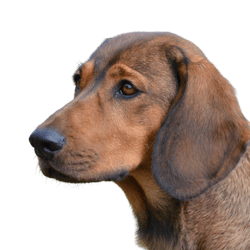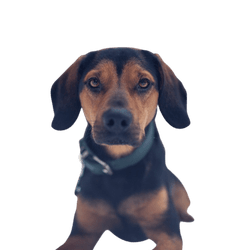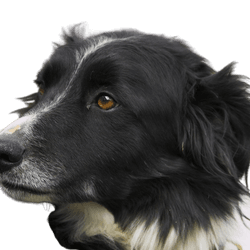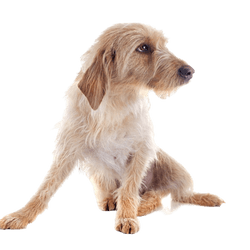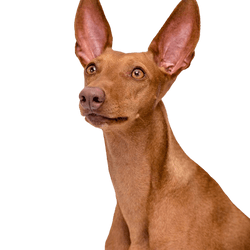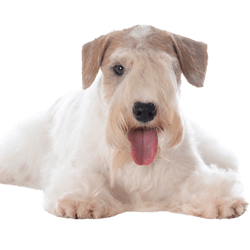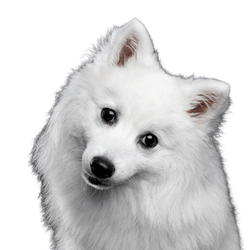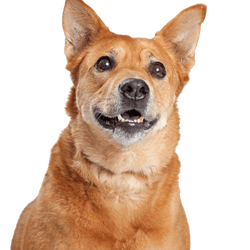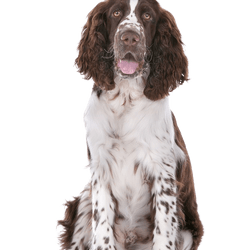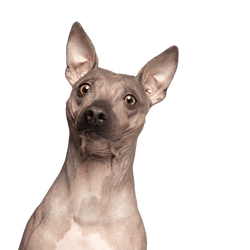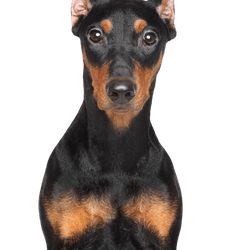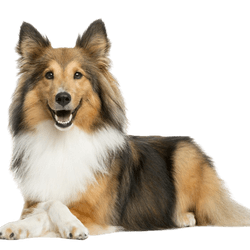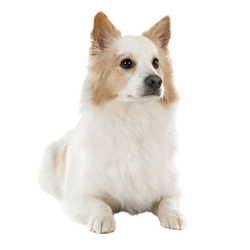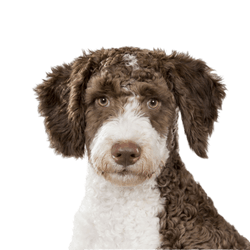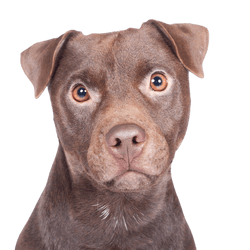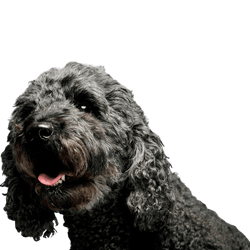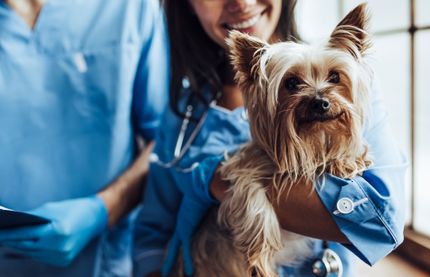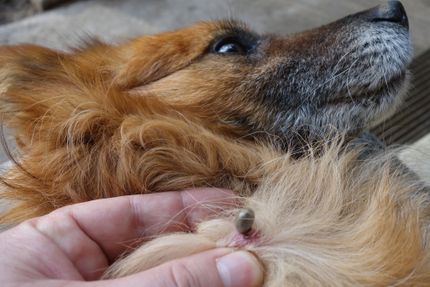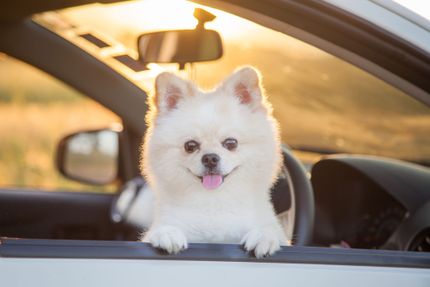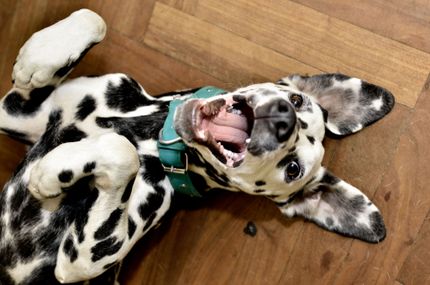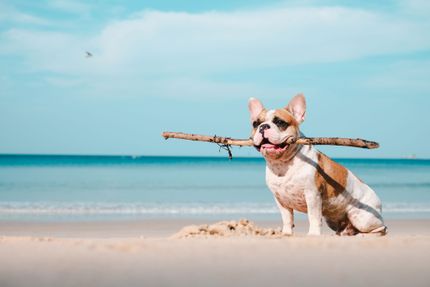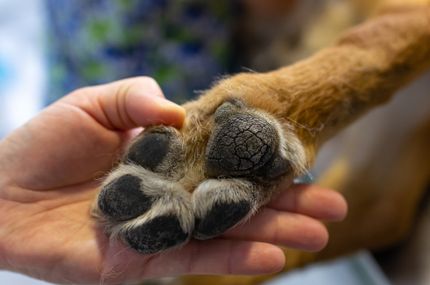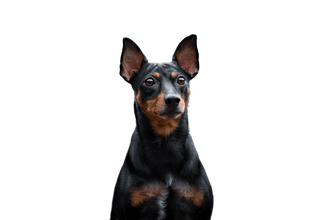
Pinscher Breed description: Character & Co
Pinscher
Facts & Origin
The versatile domestic dog Pinscher
The (German) Pinscher belongs to the FCI standard with the number 184 and is assigned to group 2 "Pinscher, Schnauzer, Molossoid, Swiss Mountain Dogs" and section 1.1 "Pinscher and Schnauzer" and is a recognized German dog breed. As far as the Pinscher breed is concerned, there are
- the German Pinscher,
- Rehpinscher/ Dwarf Pinscher/ Mini Pinscher,
- Pinscher mix like the Pinscher Dobermann,
- Affenpinscher
- and the Austrian Pinscher.
The largest is the Pinscher Dobermann, the smallest, one would think, is the Mini Pinscher, as the name already indicates, but the smallest species is the Affenpinscher (FCI Standard No. 186). Compared to the German Pinscher, the Austrian Pinscher (FCI Standard No. 64) looks slightly more rustic and is of broader stature. In former times Pinschers were widespread in Central Europe, especially in the south of Germany as well as in the neighbouring country Austria. Etymologically, the term "Pinscher" comes from the German language and means roughly "biter". Later, the word was borrowed from the English "pinch", which alludes to the Pinscher's cropped ears.
What is the origin of the Pinscher?
Little is known about the origin of the Pinscher. It is disputed whether the Pinscher, like the Schnauzer, descends from the English Terrier or vice versa. One theory says that he descends from the black terrier. The other assumes that his ancestor is the now extinct Rat Pinscher. The fact is that Pinschers have not changed significantly since the beginning of purebred dog breeding over 100 years ago. He was also historically dubbed the so-called "nice dog breed," said to have supplanted the pug. Worth mentioning by name for the preservation of the breed is Werner Jung, who promoted the flourishing of this breed in the fifties of the 20th century. Meanwhile, smooth-haired and rough-haired Pinschers are classified separately and also counted among Schnauzers, with rough-haired ones being more common. Both are listed together in the Pinscher-Schnauzer Club 1895. In the 19th century, Pinschers were kept as guard and hunting dogs on the farm to protect property and drive away rats. They functioned primarily as stable and carriage dogs and were present on almost every farm by 1900. This earned them the nicknames "stable Pinscher" and"Rattler". Since 2003, however, the Pinscher, like the Spitz, is on the list of endangered breeds.
| Name of the Pinscher | Size | Weight |
|---|---|---|
| German Pinscher | 43-51 cm | 11-20 kg |
| Affenpinscher | 23-30 cm | 2-6 kg |
| Doberman | 66-71 cm | 34-41 kg |
| Miniature Pinscher | 25-32 cm | 3-5 kg |
| Austrian Pinscher | 33-48 cm | 12-18 kg |
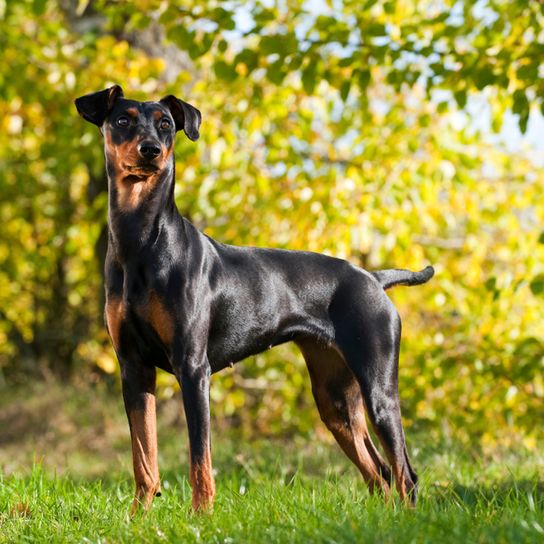
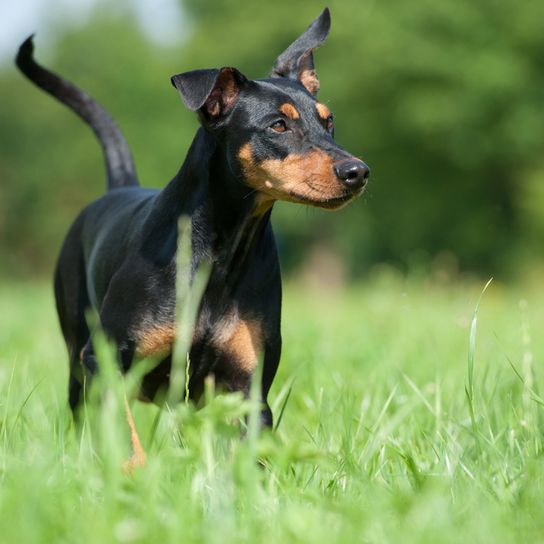
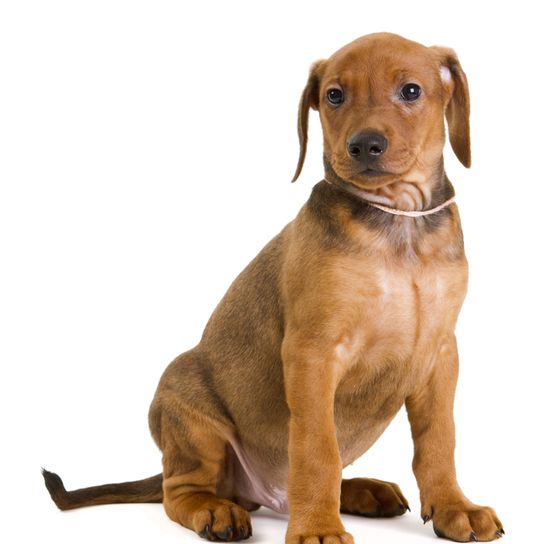
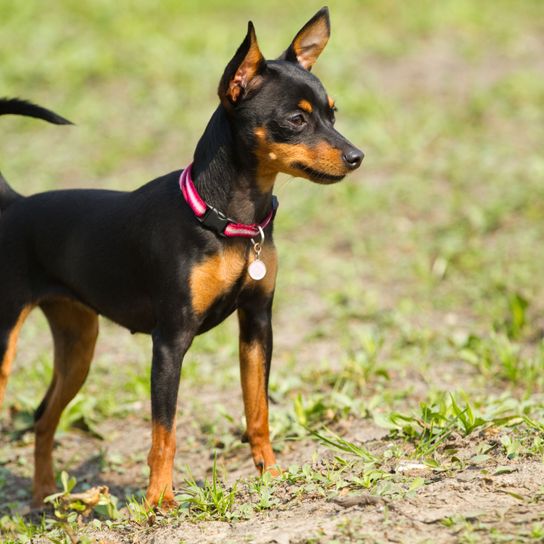
| Alternate Name | - |
| Origin | Germany |
| Life expectancy | 10 - 15 years |
| Care requirements | low-maintenance |
| Activity level | high |
| FCI group | Pinscher and Schnauzer type |
| AKC group | not recognised |
| KC group | not recognised |
Attitude, character and temperament of the breed
What are typical character traits of the Pinscher?
Pinschers, like the Doberman, are very self-confident and can adapt quickly to any situation. Therefore, they are ideally suited as family dogs for both country and city life. It has a loyal character, is very playful and is characterized by versatile qualities such as condition and robustness. The Pinscher learns new things quickly and is considered a practical dog. By no means is he a yapper, for he is called a rare barker. He is very alert, guards the property and warns of strangers. The hunting instinct varies in intensity from individual to individual. The same applies to exploring the surroundings and marking territory with scent. While indoors it radiates calmness, outdoors it is very active and full of impulsiveness and completely in its element.
Education of the Pinscher
If you want to keep a Pinscher, you should do your research beforehand and already have a certain amount of experience. Pinschers are not really suitable for beginners of dog keeping. It is important to know that Pinschers have a mind of their own and can be very stubborn at times. In order for the Pinscher not to get the upper hand, it needs consistent training and assertiveness, but in a loving and gentle way, please. Although it needs clear instructions, you will not get anywhere with it by exerting pressure. Often a verbal order in an appropriate tone of voice will suffice. Praise and rewards are the best way to implement educational measures. The relationship between the Pinscher and its master or mistress is the most important thing. Show it its limits so that it learns what it is allowed to do and what not. Only so you have it under control. The right intonation sets the tone. It will understand what you want from it. The Pinscher needs a lot of affection and petting. Nevertheless, it can be left alone at home for a few hours. It is not a play dog for children. If it retreats because it needs to rest, it must be allowed to do so. It is not suitable for a protection dog test, because this kind of training could make it dangerous.
But it is well suited for the following activities:
- Subordination,
- traffic escort dog test,
- amateur sports,
- agility,
- and tracking work.
Character
Usage
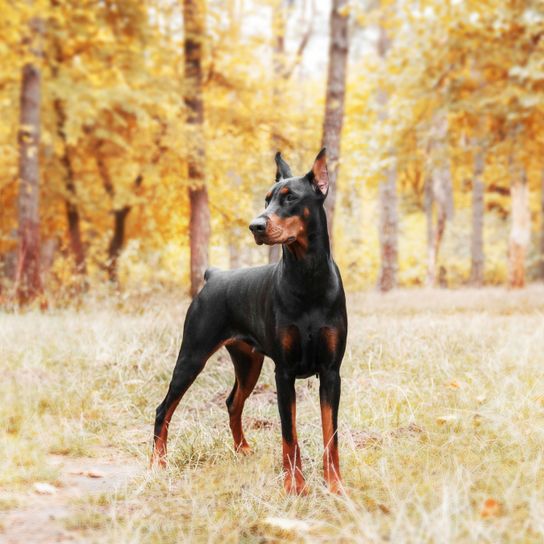
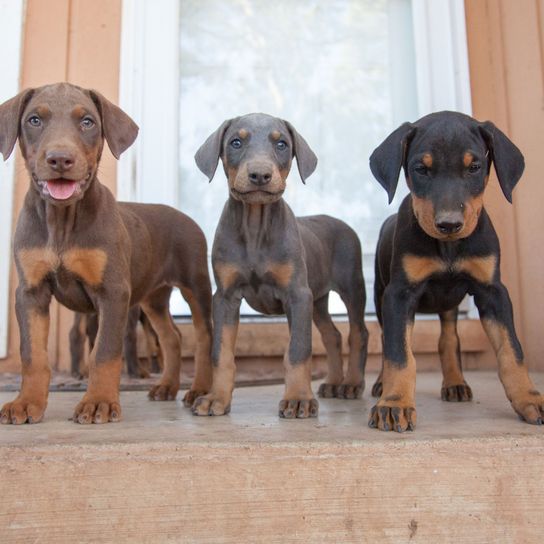

Health and breeding information
What are typical diseases of the Pinscher?
The German Pinscher has only a small number of genetic diseases, which are due to breeding. Pinschers can be susceptible to ear problems, the so-called ear rim problem, as they only have a thin layer of hair and are therefore prone to minor injuries. Mandatory health care and disease prevention includes hip dysplasia. Optional are the detection of diseases of the eyes, color fading and Von Willebrand disease, a blood clotting disorder. According to the German animal protection law the docking of the ears is forbidden since 1987 and that of the tail since 1998. Despite their short coat, Pinschers are not suitable for allergy sufferers, as they also shed. Schnauzers or Poodles would be suitable for allergy sufferers.
What should be considered when breeding Pinschers?
The breed characteristics and given standards must be fulfilled, only then a serious breeder can be identified. It should also be ensured that neither ears nor tail are docked. If you want to breed Pinschers, you should inform yourself well beforehand, in order to meet all requirements.
Pinscher types
The Miniature Pinscher (FCI-Standard No. 185) is also called Deer Pinscher or Mini Pinscher, so it is one and the same. It is quasi the small version of the German Pinscher. In comparison, it is only 25 to 30 cm tall and weighs around 4 to 6 kg. Its nature is very affectionate with the tendency to fixate on one person. Since it has a very strong urge to move, it becomes nervous if it does not get enough exercise. Genetically, the Miniature Pinscher can develop what is known as Acral Mutilation Syndrome (AMS), a rather rare condition of the nerves that is congenital and negatively affects the paws in the form of self-mutilation.
A Pinscher mix such as the Pinscher Doberman (FCI Standard No. 143), on the other hand, is the large version of the German Pinscher. It grows to be about 60 to 70 cm tall with a weight of 32 to 45 kg. Its life expectancy is 10 to 13 years, which can be attributed to its size. Its behavior is somewhat similar to that of a Doberman.
Conclusion
If you inform yourself well in advance and find a reputable breeder, you can confidently face the adventure Pinscher and will be rewarded with a faithful friend at your side. Whether you get the small version Affenpinscher, the German Pinscher or the big version with the addition Doberman, is up to you. The little friend will be an enrichment for your life and everyday life in any case.


Appearance and coat of the Pinscher
The typical appearance of the Pinscher, which also defines the typical breed characteristics, is characterized by short and dense fur that lies smoothly against the body and has a certain sheen. The coat is either lacquer black with reddish markings, reddish brown or red. The folding ears are located high up and have a V-shape, with the inner edges of the ears resting against the cheeks and pointing forward. The different Pinscher species differ mainly in terms of coat and size.
How big does a Pinscher get and how much does it weigh?
A Pinscher grows to a height of about 45 to 50 cm and thus belongs to the small dogs. Its weight is ideally about 14 to 20 kg.
How old does a Pinscher become?
As a small dog breed, the Pinscher has a life expectancy of about 12 to 15 years and is therefore one of the breeds that can reach a higher age, especially with good care.
| Fur length | short |
| Fur | flat coated |
| Ear shape | Tilt-ear |
| Tail | lang |
| Anatomy | muscular, slim |
| Size ♀ | 15 - 60 cm |
| Weight ♀ | 3 - 30 kg |
| Size ♂ | 15 - 60 cm |
| Weight ♂ | 3 - 30 kg |
| Suitable For | - |
Colors
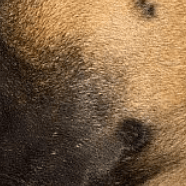
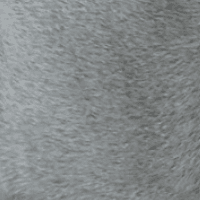
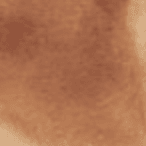
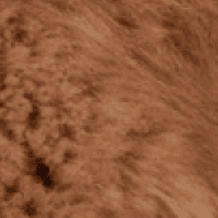




Known Diseases
Blue Doberman Syndrome
Blue Doberman Syndrome (Alopecia). This is a hereditary disease that leads to progressive hair loss.
Dancing Doberman Diseas
Initially, there is only bending of the legs, which is caused by muscle failure. In the advanced stage, the disease then leads to paralysis.
ear canal inflammation
Chronic inflammation of the ear canal can occur in some breeds. Common in dogs that like to swim.
Hip dysplasia (HD)
The hip dysplasia or hip joint dysplasia of the dog (HD) is a maldevelopment of the hip joint.
Numbness
Often occurs in old age.
Other medium dogs
Useful Articles
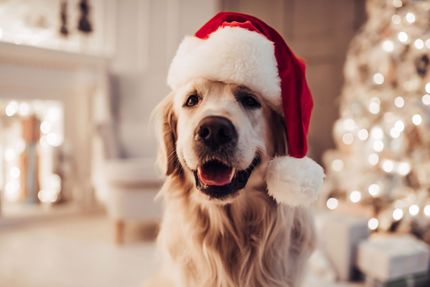
You can find articles that might interest you in the dogbible blog to match your favorite breed.
Visit our magazineto stay up to date on dog trends.
To find out more, view our Privacy Policy
Find here the breed that suits you and find out what character traits it has. Here you can also learn more about the origin, size and weight of your favorite breeds.
Matching your favorite breed, you'll find articles that might interest you on the dogbible dog blog.
Calm dog breeds - list & what makes them so special
Lake Garda with dog - Dog runs, Bathing place for dogs, Dog beach on Lake Garda
Rabies in dogs - rabies vaccination and signs that your dog is affected
Relaxed walking on the leash in spite of other dogs - 3 tips for leash leadership
Travelling with a dog in a Camper - this is what you have to bear in mind!
